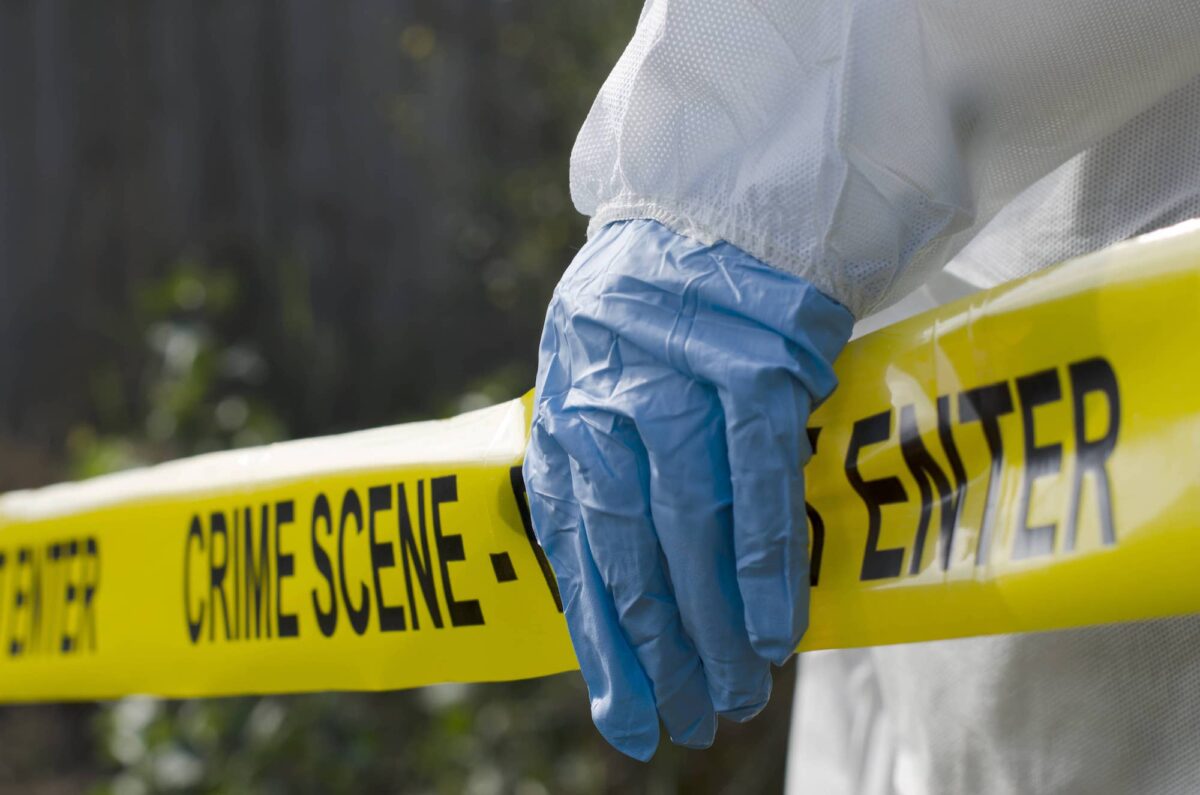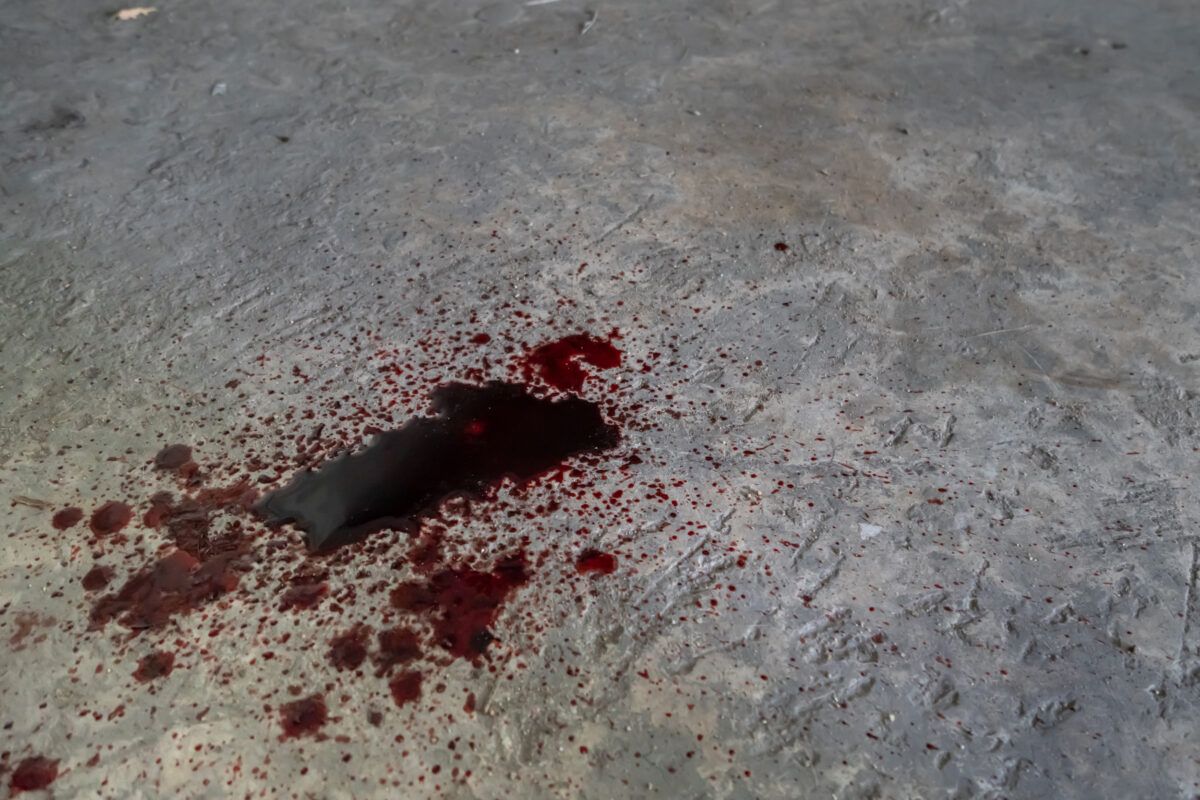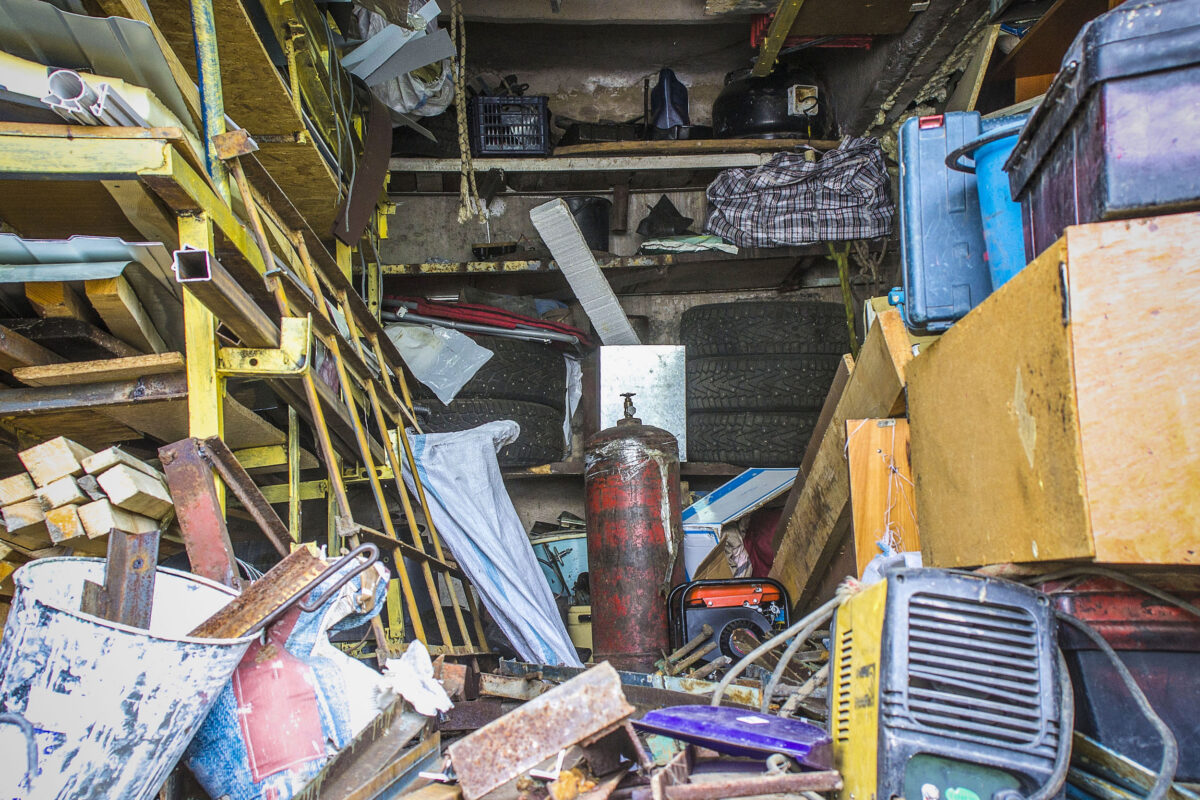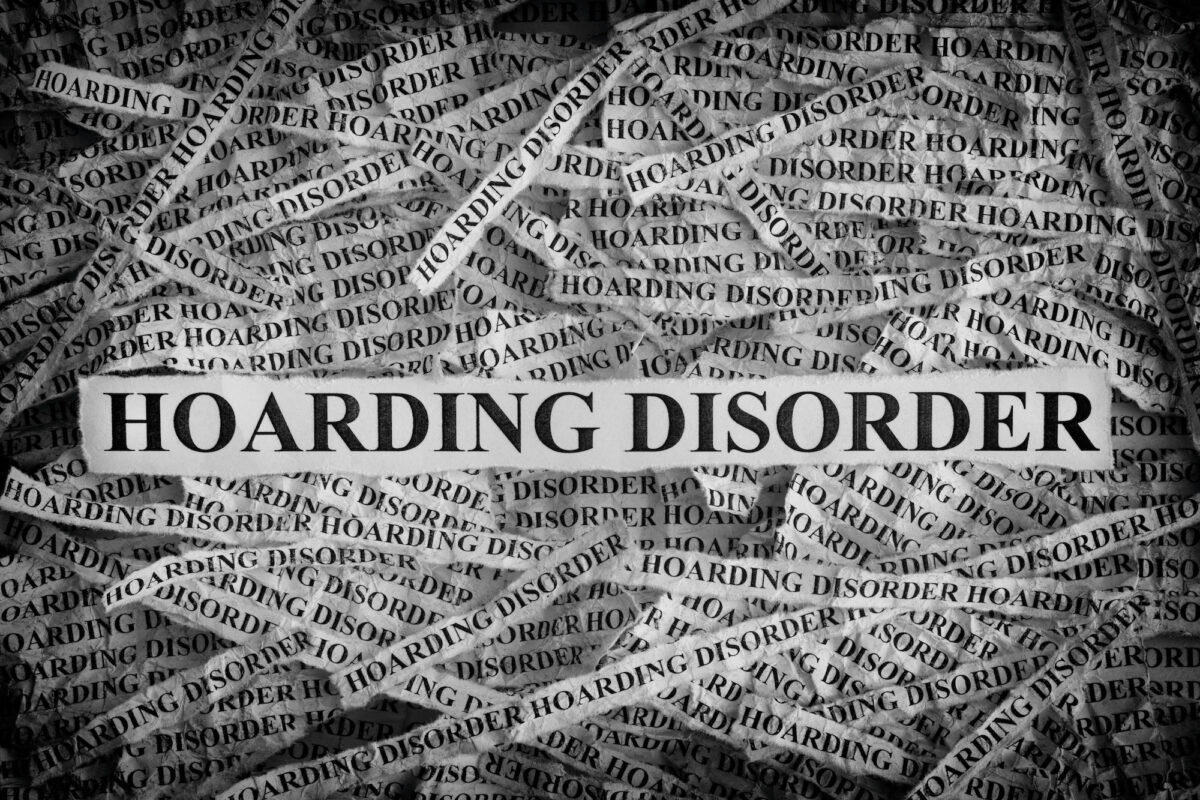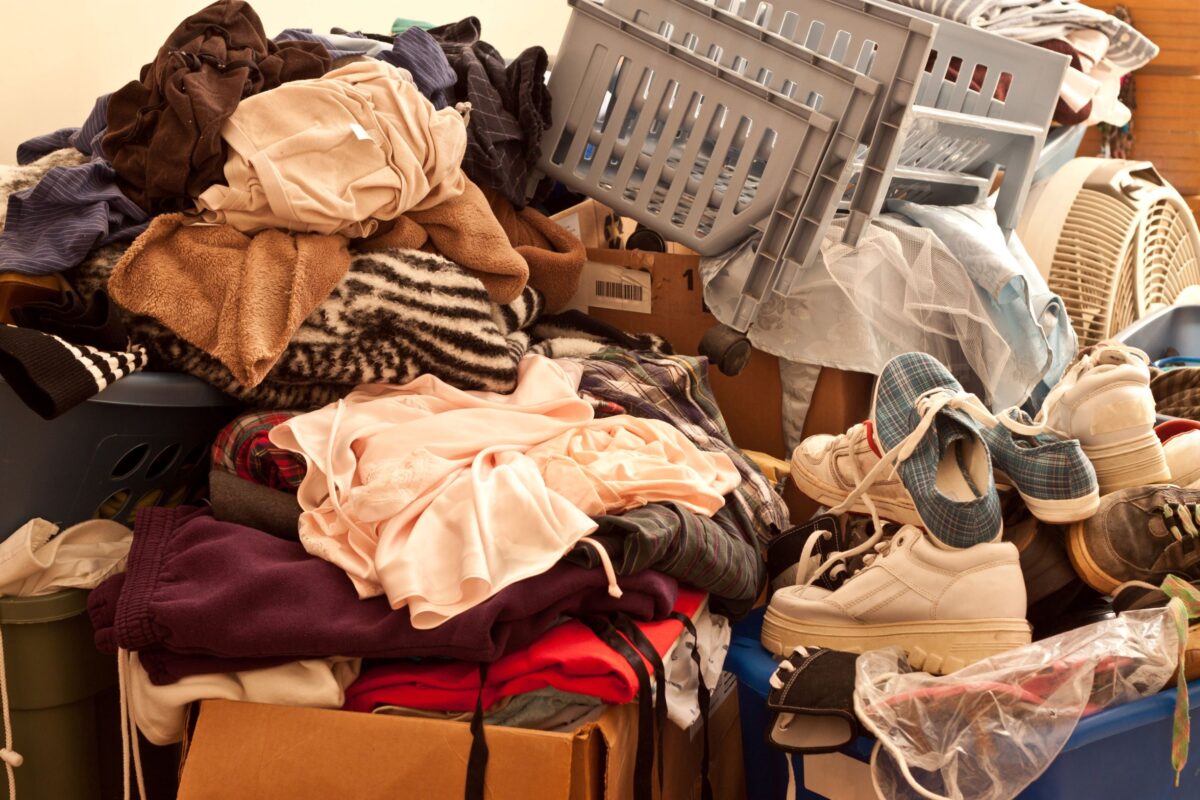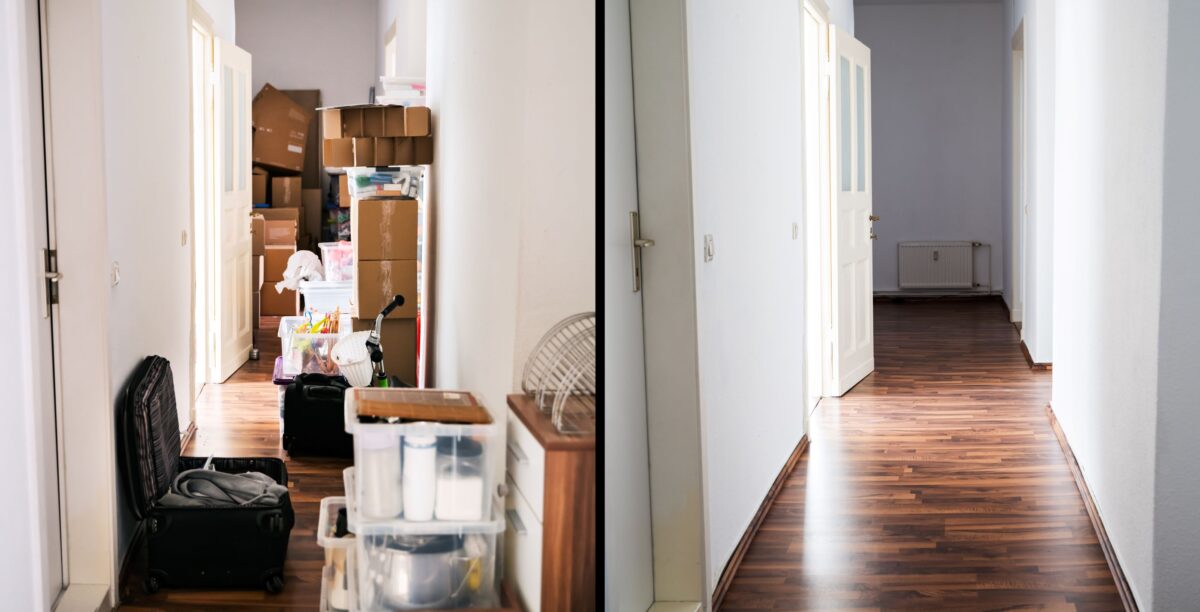This month at The BIOClean Team we’re focusing on the crime scene cleanup part of our business. It’s not the one we talk about the most often, but it is a service we are proud to offer. This time on the blog we’ll talk about what exactly a crime scene cleanup job entails, how they come about, and more.
The What, Who, When, and How of Crime Scene Cleanup
What is Crime Scene Cleanup
Crime scene cleanup is exactly what it sounds like. It’s the cleaning and remediation of a location that has been the setting for a crime. In the course of these crimes occuring there is the potential for harmful contaminants like blood, bodily fluids getting into the surfaces of the space such as the walls, floors, subfloors, etc. The blood and fluid can be home to bloodborne pathogens. Those pathogens can make whoever lives in that space sick, even months later so getting it professionally cleaned and remediated right away is of the utmost importance for safety.
Who Needs Crime Scene Cleanup
The usual clients who call for crime scene cleanup are the home/property owners of the place where a crime has been committed. It’s important to remember that it isn’t the magnitude of the crime that denotes needing a crime scene cleaner, it doesn’t have to be a particularly ‘bad’ crime to need our services.
It just needs to have created an environment that is hazardous, without biohazardous material being left behind. Even something as relatively “low stakes” as a breaking and entering could necessitate a professional to come out if the burglar cut their hand on a glass window or something. That could feasibly leave a puddle of blood or smears around the home. If the home was unoccupied at the time and found later the blood could have made for a more hazardous environment as the material was allowed to seep into the materials.
When to Call for Crime Scene Cleanup
Anytime you’re the victim of a crime and there’s a mess left behind! You can never be too careful when it comes to things like potential biohazards!
How Do We Tackle Crime Scene Cleanups
After Law Enforcement, EMS and the Coroner leaves the crime scene, family members, property managers and business owners are faced with the daunting task of cleaning up after the traumatic event. Having a compassionate, discreet and locally available company to clean the scene helps grieving family or affected businesses move forward safely and efficiently.
Our highly trained BIOClean Team technicians will arrive in discreet vehicles and provide comprehensive cleaning services, out of sight of neighbors and onlookers. If the crime scene is in plain sight, we do have the ability to set up large containment partitions and will do our best to be as discreet as the scene allows. BIOClean Team technicians will never speak with the media.
From there, there are two key pieces of the cleanup process: Containment and then Cleaning/Removal
The contaminated area is framed off to control where the contamination might spread. If the blood, bodily fluids, etc. can be kept from contaminating surfaces further that is the first step in a solid cleanup plan.
When the situation has been contained, it’s time to start the cleanup. First, any obvious debris, objects that can’t be cleaned, dirt, and biohazardous waste (blood, fluids) are removed and safely disposed of. Then it’s time for disinfecting! Using the proper cleaners, disinfectants, and other tools, we clear away any remnants of the contamination. Afterward we can use deodorizers to ensure there’s no lasting smell.
After a crime, the last thing the victims and family need to worry about is who is going to clean up. Call The BIOClean Team – We’re Here to Help
- Most Crime Scene Cleanups are Covered by Insurance
- No Out-of-Pocket Costs in Most Cases
- We offer FAST 24/7/365 Service
- We are Locally Owned & Operated
- We are Licensed by CA Dept. of Public Health
The BIOClean Team also provides services for the following tragic events, such as:
- Suicides
- Homicides
- Traumatic Accidents
- Accidental Death
- Undiscovered or Unattended Death
- Fatal Accidents

